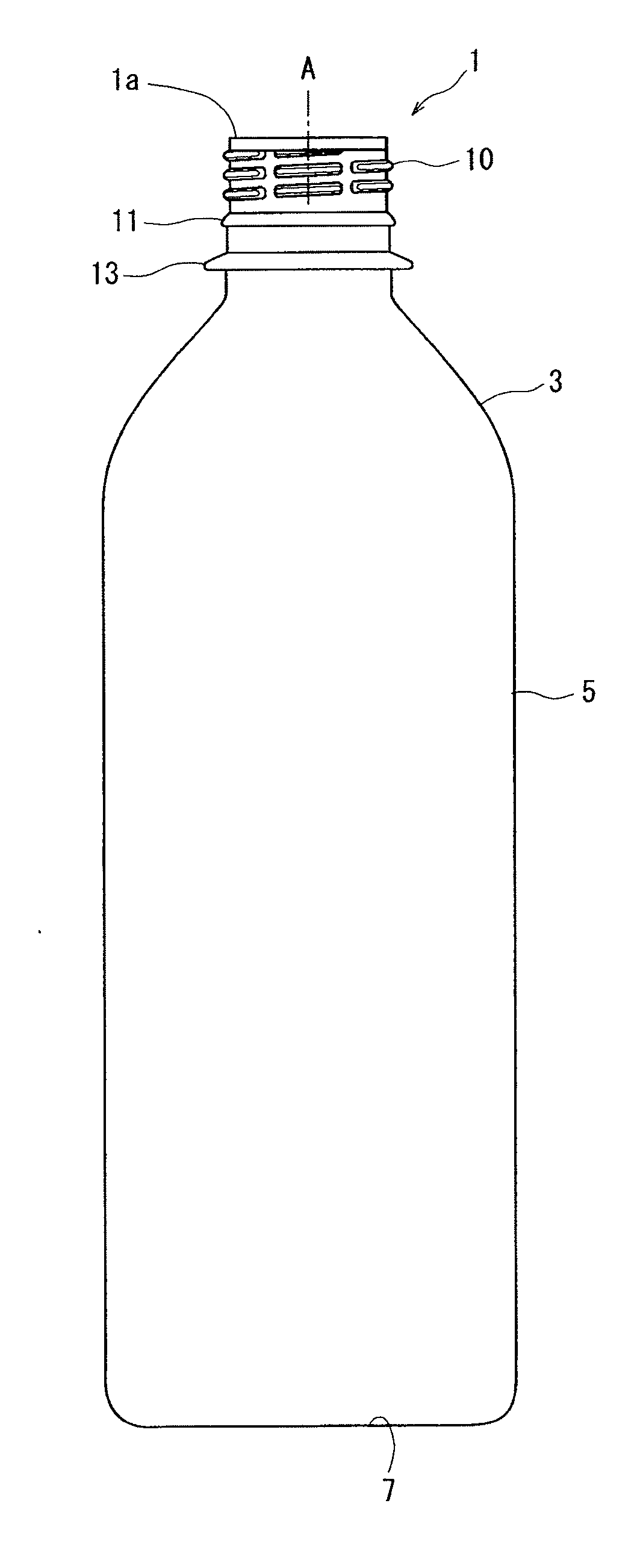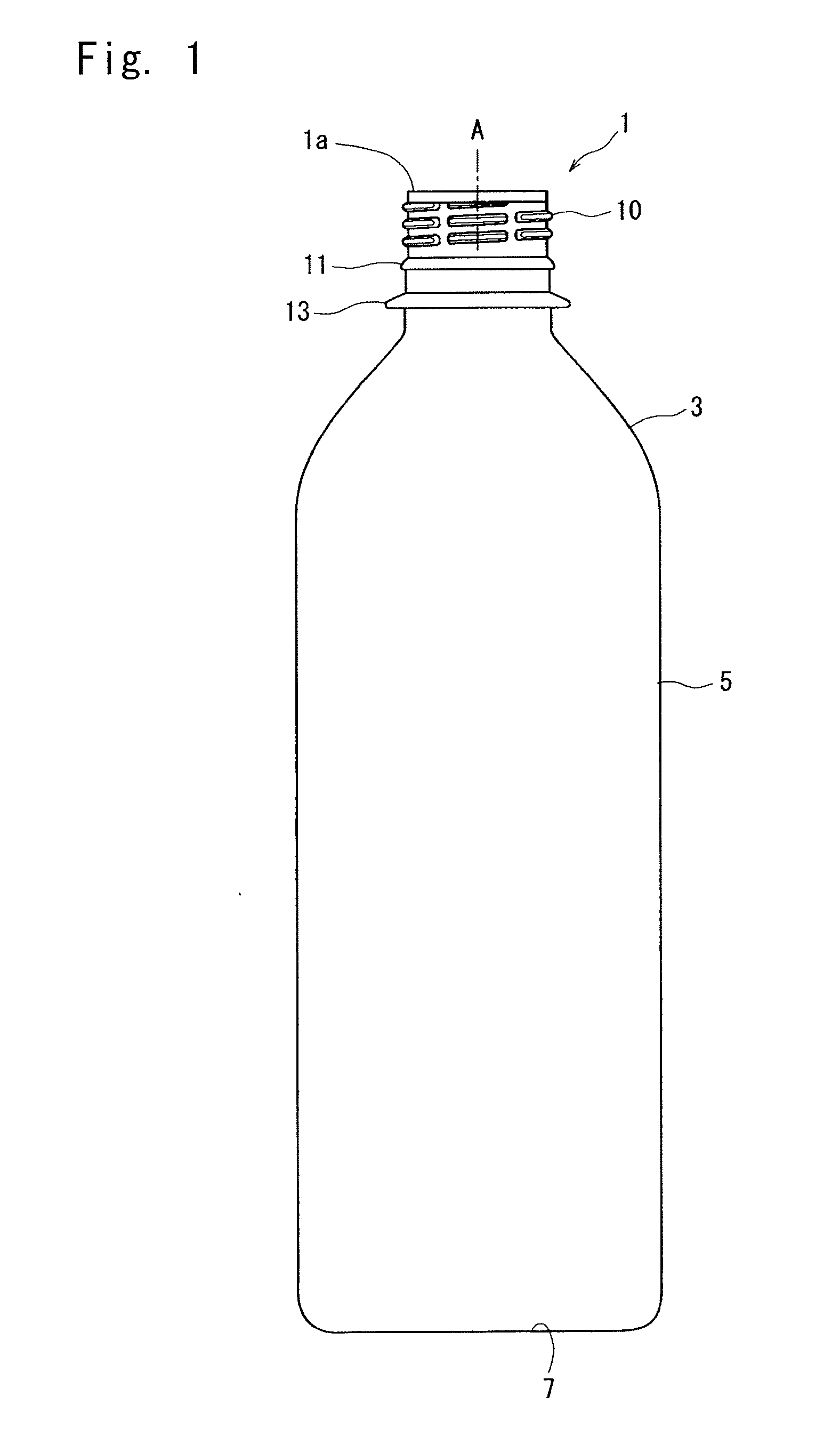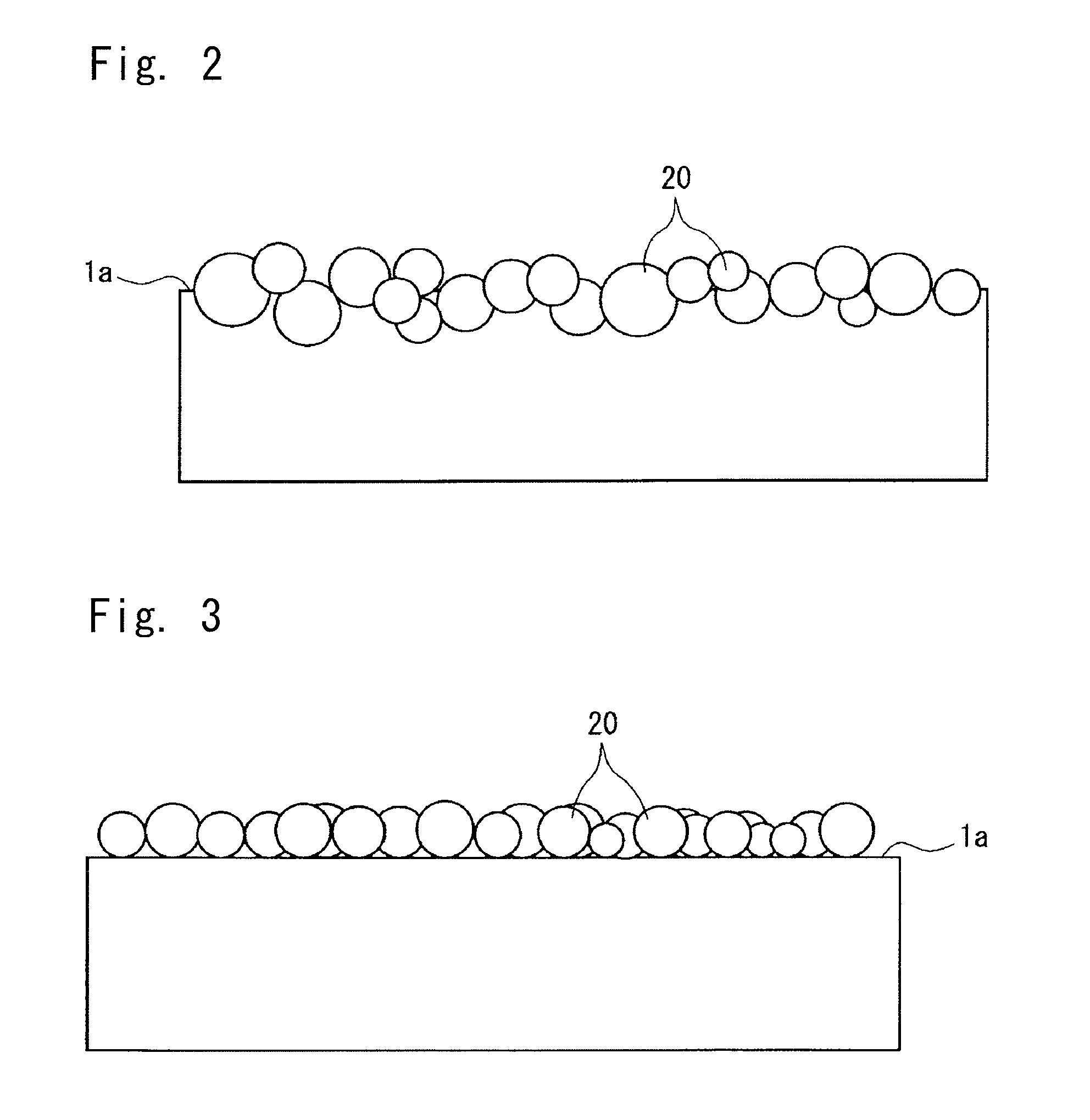Pour-out member for discharging viscous fluid
a technology of viscous fluid and a member, which is applied in the field of pliable tubular containers, can solve problems such as liquid creeping, and achieve the effects of preventing container fouling and avoiding an increase in cos
- Summary
- Abstract
- Description
- Claims
- Application Information
AI Technical Summary
Benefits of technology
Problems solved by technology
Method used
Image
Examples
example 1
[0096]By using an injection-forming machine (NN75JS manufactured by Niigata Tekkosho Co.), a polyethylene terephthalate (PET) resin (RT543CTHP produced by Nihon Unipet Co.) that has been dried was injection-formed at a barrel setpoint temperature of 280° C. in a cycle time of 30 seconds to obtain an amorphous preform weighing 28 g (for a 500-ml PET bottle).
[0097]After formed, there was provided, as the lower mold (jig 60 for forming hydrophobic layer), an aluminum mold equipped with a band heater and having, in the upper surface thereof, a dent (recessed portion 63) of a diameter of 32 mm and a depth of 1.8 mm, and hydrophobic silica (RX300 produced by Nihon Aerosil Co.) was filled in the dent.
[0098]After filled, the whole lower mold was heated by the band heater at 60° C. As the upper mold, there was provided an aluminum mold capable of fixing the preform. The formed amorphous preform was fixed thereto with the nozzle portion facing downward, and the upper mold was pressed onto the...
example 2
[0102]0.4 Grams of a polyester resin (Bylon 200 produced by Toyobo Co.), 100 g of a methyl ethyl ketone (produced by Wako Junyaku Co.) and stirrer chips were put into a glass bottle, sealed therein, and were stirred by using a stirrer to a sufficient degree until the resin has dissolved. Thereafter, 3 g of hydrophobic silica (RX300 produced by Nihon Aerosil Co.) was added thereto, and was stirred by using the stirrer for 30 minutes. After stirred, the ultrasonic treatment was conducted for 30 minutes to obtain a homogeneous solution.
[0103]By using a bar coater, the obtained solution was applied onto one surface of a PET film of a thickness of 100 μm, and was dried in an oven heated at 100° C. for 2 minutes to obtain a film coated with the hydrophobic silica. A water droplet that was fallen on the film did not adhere thereto despite it was a small droplet proving water-repelling property.
[0104]A PET bottle was obtained in the same manner as in Example 1 but providing an aluminum bloc...
example 3
[0118]As the lower mold (jig 60 for forming hydrophobic layer), there was provided an aluminum mold equipped with a band heater and forming a dent (recessed portion 63) 40 mm in diameter and 1.8 mm in depth, and the dent was filled with a hydrophobic silica (R812S produced by Nihon Aerosil Co.).
[0119]After filled, the whole lower mold was heated at 100° C. by the band heater. As the upper mold, there was provided an aluminum mold capable of fixing the hinge cap. The hinge cap with polyethylene pull ring was fixed to the lower mold with the pour-out portion of the hinge cap facing downward, and the upper mold was pushed onto the lower mold with a pressure of 0.1 MPa for 2 seconds to press-adhere the hydrophobic silica onto the top surface of the pour-out portion of the hinge cap.
[0120]After press-adhered, the hydrophobic silica that has not been press-adhered was removed by blowing the air to obtain the hinge cap with pull ring. The obtained hinge cap was tested for the adhesiveness ...
PUM
| Property | Measurement | Unit |
|---|---|---|
| Grain size | aaaaa | aaaaa |
| Hydrophobicity | aaaaa | aaaaa |
| Thermoplasticity | aaaaa | aaaaa |
Abstract
Description
Claims
Application Information
 Login to View More
Login to View More - R&D
- Intellectual Property
- Life Sciences
- Materials
- Tech Scout
- Unparalleled Data Quality
- Higher Quality Content
- 60% Fewer Hallucinations
Browse by: Latest US Patents, China's latest patents, Technical Efficacy Thesaurus, Application Domain, Technology Topic, Popular Technical Reports.
© 2025 PatSnap. All rights reserved.Legal|Privacy policy|Modern Slavery Act Transparency Statement|Sitemap|About US| Contact US: help@patsnap.com



